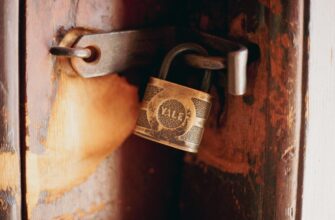- Introduction: The Critical Need to Guard Your Ledger Wallet
- How Ledger’s Security Architecture Works
- Top 5 Hacker Threats Targeting Ledger Users
- 7 Unbeatable Practices to Guard Your Ledger from Hackers
- Emergency Response: If Your Ledger is Compromised
- FAQ: Guarding Your Ledger from Hackers
- Conclusion: Security Is in Your Hands
Introduction: The Critical Need to Guard Your Ledger Wallet
With cryptocurrency thefts surging, securing digital assets is non-negotiable. Hardware wallets like Ledger offer robust protection, but users often ask: is it safe to guard Ledger from hackers? Absolutely—when configured correctly. Ledger devices store private keys offline, shielding them from online threats. Yet, human error remains the weakest link. This guide unpacks proven strategies to fortify your Ledger against breaches, ensuring your crypto stays untouchable.
How Ledger’s Security Architecture Works
Ledger wallets leverage a secure element chip, similar to those in passports and credit cards, to isolate private keys. Transactions require physical confirmation via device buttons, blocking remote attacks. Even if connected to a compromised computer, malware can’t access keys—they never leave the device. This “air-gapped” design makes Ledger inherently safer than software wallets, but proactive user measures are essential for maximum security.
Top 5 Hacker Threats Targeting Ledger Users
While Ledger’s hardware is resilient, hackers exploit vulnerabilities elsewhere:
- Phishing Scams: Fake emails or sites trick users into revealing recovery phrases.
- Malware: Keyloggers or screen recorders capture PINs during entry.
- Supply Chain Attacks: Tampered devices intercepted before delivery.
- Physical Theft: Unsecured devices accessed via brute-force PIN attempts.
- Social Engineering: Impersonators coax victims into sharing sensitive data.
7 Unbeatable Practices to Guard Your Ledger from Hackers
Implement these steps to create an impenetrable defense:
- Buy Directly from Ledger: Avoid third-party sellers to eliminate tampering risks.
- Set a Strong PIN: Use 8 digits (not patterns) and never reuse passwords.
- Write Down Your Recovery Phrase Offline: Store it on steel plates, not digitally. Never share or photograph it.
- Verify Addresses On-Device: Always check transaction details on your Ledger screen—not your computer.
- Enable Passphrase Protection: Add a 25th word for hidden wallets, creating a decoy account.
- Update Firmware Promptly: Patch vulnerabilities via Ledger Live’s verified app.
- Use a Dedicated Device: Only connect your Ledger to malware-free computers.
Emergency Response: If Your Ledger is Compromised
Suspect a breach? Act immediately:
- Disconnect the device and wipe it via factory reset.
- Restore funds using your recovery phrase on a new hardware wallet.
- Report phishing attempts to Ledger and relevant authorities.
- Monitor transactions via blockchain explorers for unauthorized activity.
FAQ: Guarding Your Ledger from Hackers
Q: Can hackers remotely drain my Ledger?
A: No. Without physical access and your PIN, remote attacks are virtually impossible due to the secure element.
Q: Is Ledger Live app safe?
A> Yes, but download it only from Ledger’s official site. Fake versions are common malware vectors.
Q: Should I worry about Ledger data breaches?
A: Past email leaks exposed user contacts—not recovery phrases or keys. Enable 2FA and ignore unsolicited support messages.
Q: How often should I check my device’s integrity?
A> Inspect packaging seals upon delivery. Periodically verify firmware authenticity in Ledger Live.
Conclusion: Security Is in Your Hands
So, is it safe to guard Ledger from hackers? Resoundingly yes—if you adopt a zero-trust mindset. Ledger’s hardware provides military-grade protection, but your vigilance completes the shield. By following these protocols, you transform your wallet into a digital fortress. Remember: In crypto, you are your own bank. Prioritize security today to safeguard your wealth tomorrow.








